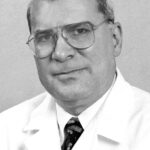Gout, a form of inflammatory arthritis, is characterized by sudden, severe attacks of pain, redness, tenderness, and swelling in the joints. These flare-ups often affect the big toe, but can also impact other joints such as ankles, knees, and wrists, significantly hindering a patient’s ability to move. Therefore, a crucial nursing diagnosis for individuals experiencing gout is Impaired Physical Mobility. This diagnosis addresses the limitations in independent, purposeful physical movement of the body or one or more extremities.
Understanding Impaired Physical Mobility in Gout
The intense pain and inflammation associated with gout directly contribute to impaired physical mobility. Joint swelling restricts movement, causing stiffness and discomfort upon any attempt to move the affected area. Patients may exhibit an altered gait, decreased range of motion, and experience difficulty with basic movements like turning, standing, or walking. Hesitancy to move is a common symptom, stemming from the anticipation of pain. This physical limitation can impact a patient’s daily life, affecting their ability to perform routine activities and maintain their independence.
Assessment for Nursing Diagnosis
A thorough assessment is essential to confirm the nursing diagnosis of Impaired Physical Mobility in gout patients. Key assessment points include:
- Evaluating Pain and Inflammation: Nurses must meticulously assess the severity, location, and characteristics of joint pain and inflammation. This helps in understanding the extent of mobility impairment.
- Range of Motion (ROM) Assessment: Assessing both active and passive ROM in affected joints is critical to determine the degree of stiffness and limitation.
- Observing Gait and Posture: Observing the patient’s gait for alterations, limping, or instability, and noting any postural changes adopted to minimize pain are important indicators.
- Patient’s Subjective Reports: Actively listening to the patient’s description of their discomfort, difficulty moving, and any hesitancy to engage in physical activity provides valuable insights.
- Reviewing Diagnostic Findings: Synovial fluid analysis confirming the presence of urate crystals supports the diagnosis of gout and its impact on joint function.
Nursing Interventions to Improve Mobility
Nursing interventions are aimed at alleviating pain, reducing inflammation, and improving physical mobility in patients diagnosed with gout. These interventions include:
- Weight Management Counseling: Excess weight puts additional stress on joints and is linked to conditions that exacerbate gout. Encouraging weight loss through diet and exercise is crucial.
- Therapeutic Exercises: Implementing a regimen of active and passive Range of Motion (ROM) exercises helps maintain joint flexibility and reduce stiffness. These exercises should be tailored to the patient’s pain level and tolerance.
- Referral to Physical or Occupational Therapy: Consultation with PT/OT professionals provides specialized evaluation and personalized plans focusing on strength training, gait retraining, and adaptive strategies to improve mobility and independence.
- Assistive Devices and Mobility Aids: Recommending and instructing on the use of mobility aids like canes, walkers, or braces can enhance safety and confidence during movement, particularly during flare-ups.
- Joint Protection Strategies: Educating patients on joint protection techniques and recommending low-impact exercises like swimming or cycling minimizes stress on affected joints while encouraging physical activity.
Conclusion
Addressing Impaired Physical Mobility is a central aspect of nursing care for patients with gout. By conducting comprehensive assessments and implementing targeted interventions, nurses can significantly improve patient comfort, enhance mobility, and promote a better quality of life despite the challenges posed by gout. Recognizing and managing this nursing diagnosis is vital for holistic gout management.
